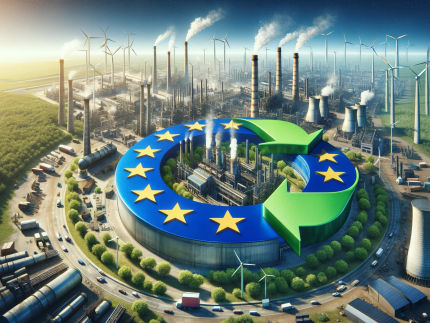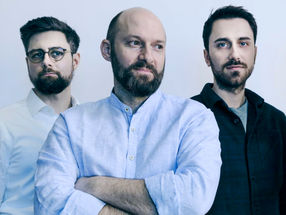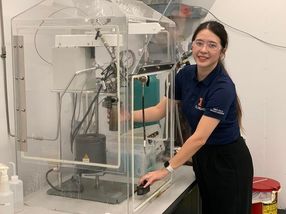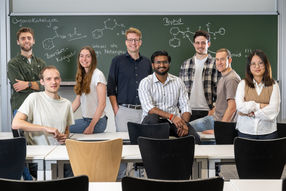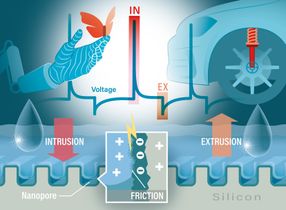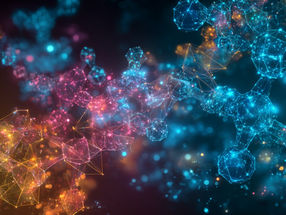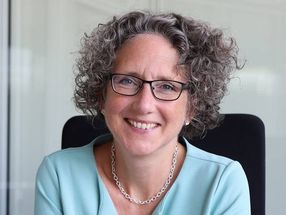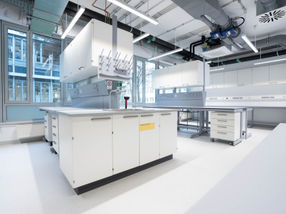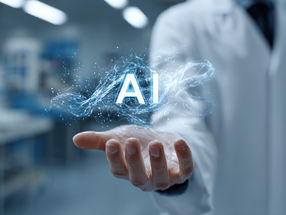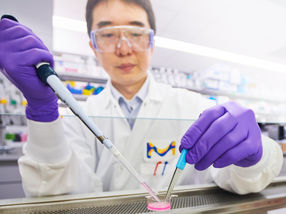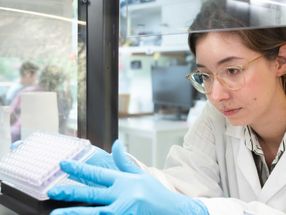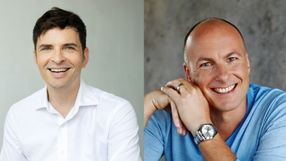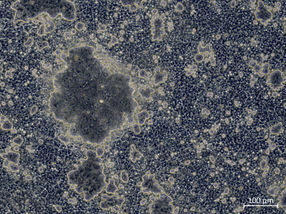Light + air = fuel
University of Duisburg-Essen spin-off puts new plant for synthetic natural gas into operation in Duisburg
Advertisement
At the Center for Fuel Cell Technology, an affiliated institute of the University of Duisburg-Essen, Greenlyte Carbon Technologies put its first commercial liquid solar plant into operation on November 20. It is based on process steps that were researched and developed at the University of Duisburg-Essen. CO₂ is captured from the air and green hydrogen is produced - a technology that provides the raw materials for climate-neutral fuels. Hendrik Wüst, Minister-President of North Rhine-Westphalia, performed the official opening ceremony in the presence of other high-ranking representatives from politics, science and business.
Direct Air Capture technology is designed to efficiently remove carbon dioxide (CO₂) from the ambient air and convert it into synthetic fuels. Sectors such as aviation, shipping and industry can thus significantly reduce their emissions of climate-damaging CO₂. The industrial-scale plant that has now opened in Duisburg uses a combination ofCO2 capture and water electrolysis to produce the raw materials for synthetic natural gas.
The plant at the Centre for Fuel Cell Technology (ZBT) will capture around 40 tons of CO₂ from the air each year and provide it as clean gas, part of which will be converted into a total of five tons of synthetic natural gas (SNG) in the ZBT's own plant. The modular technology is easily scalable and runs entirely electrically - an advantage over previous processes, which rely on high temperatures and are significantly less efficient.
The sustainable technology of the future is based on 15 years of research by Dr. Peter Behr, who worked intensively on the carbon capture process at the University of Duisburg-Essen and founded Greenlyte Carbon Technologies GmbH together with Florian Hildebrand and Dr. Niklas Friederichsen in 2022. In addition to the Chair of Energy Process Engineering and Energy Systems at the University of Duisburg-Essen, the Chair of Technical Thermodynamics at RWTH Aachen University is also involved in the plant that has now opened in Duisburg.* The University of Duisburg-Essen supported the spin-off by providing assistance from its GUIDE start-up center.
"This facility impressively demonstrates how the results of university research can be transferred to start-ups and industrial dimensions," says Prof. Dr. Barbara Albert, Rector of the University of Duisburg-Essen. "With Greenlyte, knowledge from research is translated into modern technology for climate neutrality."
Co-founder Dr. Niklas Friederichsen sees the hydrogen test field on the Duisburg campus as the ideal location for the liquid solar plant: "The ZBT hydrogen test field is located 20 km away from Greenlyte Carbon Technologies' headquarters. We believe in fast, iterative development processes, for which spatial proximity and a close exchange with colleagues are invaluable. Over the past few years, a wealth of infrastructure and hydrogen expertise has been built up at the site itself, but also in the Ruhr region as a whole, from which we benefit greatly as an innovative company. Here we can further develop our technology on an industrial scale in order to commercialize it robustly and validated over many thousands of hours in the next step. The opening today is an important milestone for us in demonstrating our technology on an industrial scale."
About the process technology:
Direct Air Capture technology is based on a continuously operated, three-stage process:
- Absorption: ambient air is passed through a column in which carbon dioxide (CO₂) reacts with a proprietary absorbent. The gas is chemically bound in the form of bicarbonate.
- Crystallization and separation: The bicarbonate-rich solution is crystallized in a controlled manner. Solid carbonate crystals are formed, which are easy to handle and store.
- Electrochemical desorption: An aqueous bicarbonate solution is electrochemically converted directly into carbon dioxide (CO2) and hydrogen (H2). H2 andCO2 are directly available as starting materials for the synthesis of synthetic fuels such as SNG or methanol. The absorbent is regenerated for the next cycle.
The modular technology works with non-toxic materials and can be flexibly coupled with intermittent renewable energy sources.
* Greenlyte Carbon Technologies' investors include Earlybird, Green Generation Management GmbH, Carbon Removal Partners AG, AENU Advisor GmbH and Partech. In addition to the University of Duisburg-Essen and ZBT, partners include Evonik Industries AG, Düsseldorf Airport, the Max Planck Institute for Chemical Energy Conversion, Aachen Process Engineering at RWTH Aachen University, Fumatech BWT GmbH, Uniper SE and MB Energy.
Note: This article has been translated using a computer system without human intervention. LUMITOS offers these automatic translations to present a wider range of current news. Since this article has been translated with automatic translation, it is possible that it contains errors in vocabulary, syntax or grammar. The original article in German can be found here.
Other news from the department science
Most read news
More news from our other portals
Something is happening in the chemical industry ...
This is what true pioneering spirit looks like: Plenty of innovative start-ups are bringing fresh ideas, lifeblood and entrepreneurial spirit to change tomorrow's world for the better. Immerse yourself in the world of these young companies and take the opportunity to get in touch with the founders.




